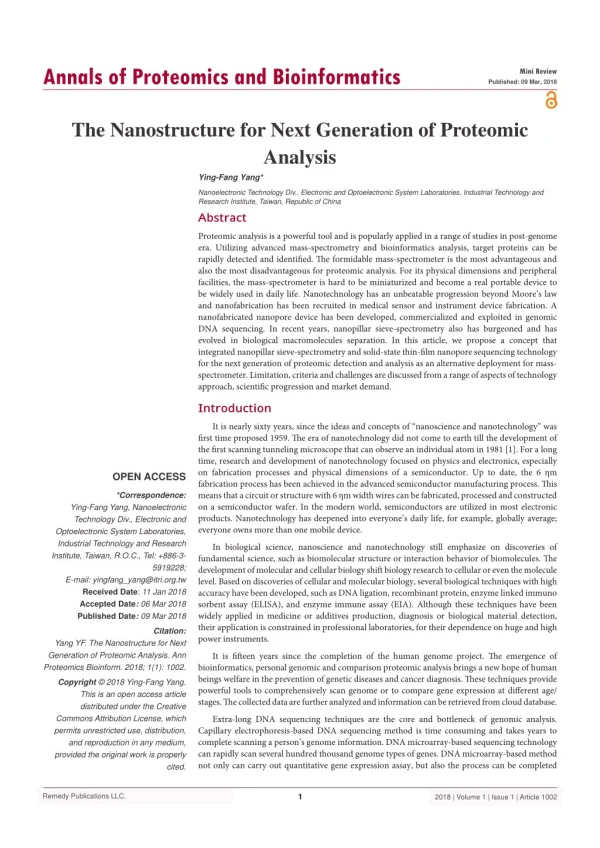The Nanostructure for Next Generation of Proteomic Analysis
Proteomic analysis is a powerful tool and is popularly applied in a range of studies in post-genome era. Utilizing advanced mass-spectrometry and bioinformatics analysis, target proteins can be rapidly detected and identified. The formidable mass-spectrometer is the most advantageous and also the most disadvantageous for proteomic analysis. For its physical dimensions and peripheral facilities, the mass-spectrometer is hard to be miniaturized and become a real portable device to be widely used in daily life. Nanotechnology has an unbeatable progression beyond Moore’s law and nanofabrication has been recruited in medical sensor and instrument device fabrication. A nanofabricated nanopore device has been developed, commercialized and exploited in genomic DNA sequencing. In recent years, nanopillar sieve-spectrometry also has burgeoned and has evolved in biological macromolecules separation. In this article, we propose a concept that integrated nanopillar sieve-spectrometry and solid-state thin-film nanopore sequencing technology for the next generation of proteomic detection and analysis as an alternative deployment for massspectrometer. Limitation, criteria and challenges are discussed from a range of aspects of technology approach, scientific progression and market demand.
★
★
★
★
★
84 views • 5 slides




